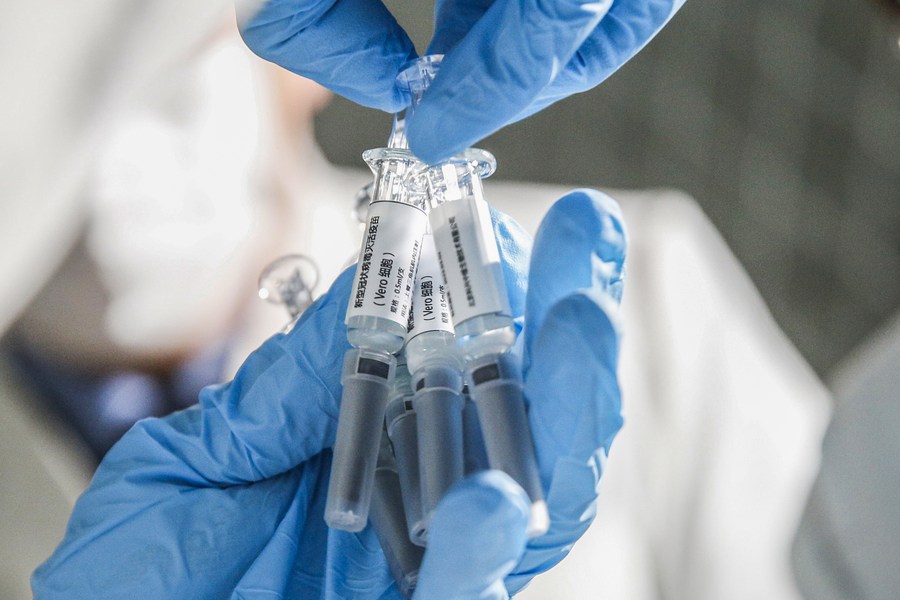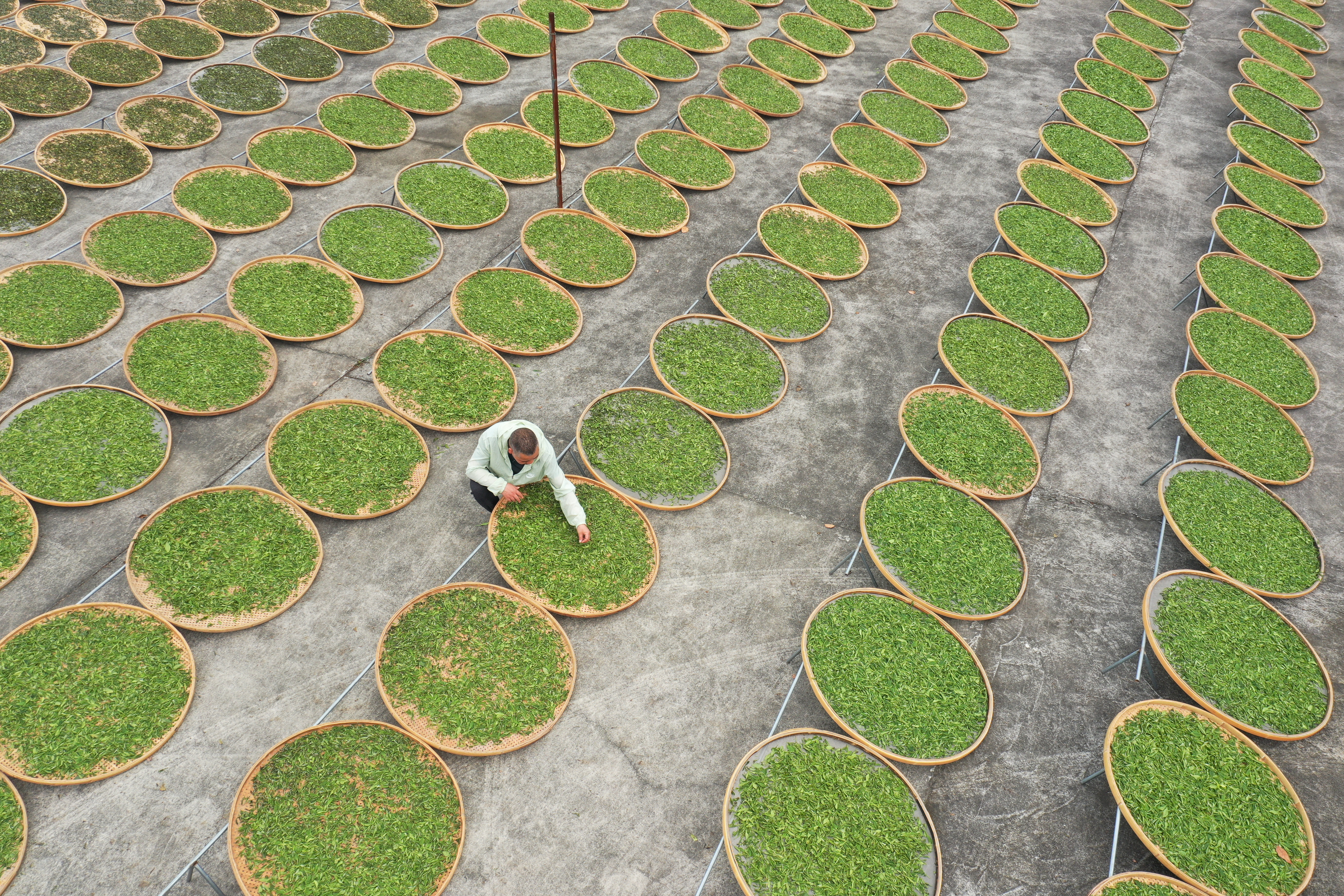Shanghai institute shares all SARS-CoV-2 expression plasmids

A staff member displays samples of the COVID-19 inactivated vaccine at Sinovac Biotech Ltd., in Beijing, capital of China, March 16, 2020. [Photo/Xinhua]
On June 17, the National Center for Protein Science Shanghai made expression plasmids of all 29 proteins encoded by SARS-CoV-2 available to scientists around the world through a Protein Bank Program (PBP), according to the Shanghai Advanced Research Institute of the Chinese Academy of Sciences.
Rao Zihe, an academician of the Chinese Academy of Sciences, and other researchers led the research on the expression plasmids of all 29 proteins encoded by SARS-CoV-2, the virus that causes COVID-19.
The study of the 29 proteins is crucial to the analysis of pathogenic mechanism, vaccine development, reagent detection, and antibody and drug development.
Experts said the first phase of the PBP is mainly focused on a protein expression plasmid bank, which provides the storage and delivery service of protein expression plasmids. The COVID-19 virus genome consists of less than 30,000 bases and can encodes 29 proteins, including 16 non-structural proteins, four structural proteins and nine auxiliary proteins. Among them, NSP7, NSP8, and NSP12 (all three are non-structural proteins) form RNA-dependent RNA polymerase complexes, which play an important role in virus replication and transcription cycle. NSP5, a 3C proteolytic enzyme, can liberate most other NSP proteins from the protein chain, and is considered to be an important target for the research of antivirus drugs. Four structural proteins, S, E, M, and N, form the outer layer of the coronavirus and protect the internal RNA, in which the spike (S) protein can help the virus invade cells.
To increase China's capabilities of responding to public health crisis, the Shanghai Advanced Research Institute of the Chinese Academy of Sciences established the Protein Bank Program.
(You can also read it at: http://www.china.org.cn/china/2020-06/24/content_76198185.htm)

